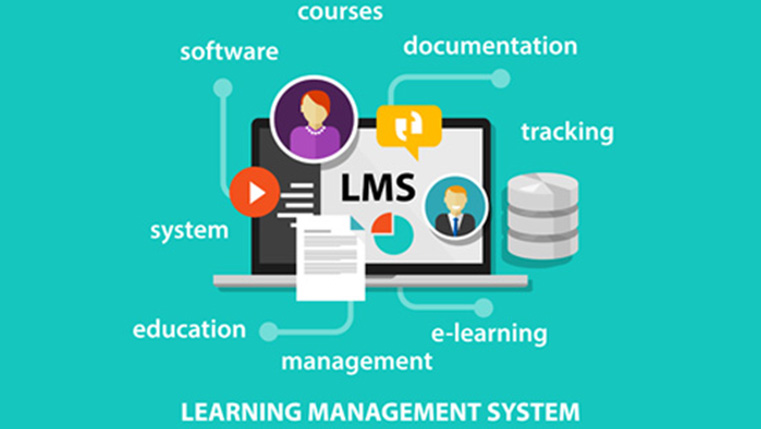5 Lesser-known Secrets to Get Your LMS Implementation Right

Implementing a learning management system (LMS in short) is a lot like learning how to drive a car.
Much like driving a car, the LMS implementation process comes back to the one often overlooked question:
‘Where are you trying to get to?’
How to Carry Out LMS Implementation Without Hassles
- Determine what you wish to achieve with the LMS
- Populate the LMS with the right kind of content
- Appoint an implementation team
- Advertise/demo the capabilities of the LMS to your learners
- Consider an LMS vendor for implementation and administration
Many companies find themselves overwhelmed by the technical capabilities of an LMS so much so that they lose sight of what they are really trying to achieve with the LMS. If you cannot navigate through the labyrinth of its technical functionalities, the entire investment in the LMS could prove very costly for the organization.
In this blog, I am going to share five LMS implementation secrets which will put you, the trainer, in the driver’s seat of your training management.
Click here to view the demo and start a free trial of Effectus LMS, a rapid, plug and play LMS.
How to Carry Out LMS Implementation Without a Hassle
1. Determine what you want to achieve with the LMS
“A goal without a plan is just a wish.”
– Antoine de Saint-Exupery, The Little Prince
Even before you go for the LMS, be clear why you wish to have it in the first place and what you would like to achieve with its implementation.
Go back to the basics and come up with a SMART action plan. Here’s how to go about it:
|
What is SMART? |
What does it mean? |
| S = Specific | In precise terms, write what you want to accomplish with implementing the LMS and why.To do this, try to identify the pain points of managing without an LMS, and then figure out how the LMS can help you mitigate these problems. |
| M = Measurable | Choose metrics to measure the success of your LMS implementation. For instance:
Track learner satisfaction on the LMS through a survey/poll at the end of the training to determine areas for improvement. Conversely, you can use the data from the LMS itself to generate detailed reports which give you measurable results. |
| A = Achievable | Set goals which can be achieved with your available resources. This means:
|
| R = Relevant | This is about ensuring that your goals are relevant and are also aligned with overall business goals.
|
| T = Timely | Impose a realistic time frame for the LMS implementation to be completed. This helps everyone involved to be on track with their deliverables. |
Keep your goals and timeline at hand as you implement the LMS to ensure you are on track.
Tip: Even after your LMS implementation is completed, maintain open communication with the implementation team to help address any issues that may arise over time.
2. Populate the LMS with the right kind of content
Content is king, and without the right content, the LMS is bound to fall flat on its face.
There is a huge misconception that an LMS can only support online learning. Although this is true of some LMSs, most LMSs now support multiple types of learning activities. You can host a wide variety of learning content on your LMS for your classroom training, online learning, or blended learning formats.
- What kind of material would you be populating the LMS with – PDFs, Word docs, MP3 files, MP4 audios/videos?
- What kind of online learning technologies would you like to use – SCORM, AICC, Tin Can API?
Here are some examples of the types of content you can host on your LMS for your learners:
- ILT material converted into online-ready material
- Recorded webinars
- Recorded face-to-face training lectures and coaching sessions
- Off-the-shelf and bespoke online learning
- Internally developed eLearning material
- Mobile/microlearning courses/assets for on-the-go access
- Online graded assessments
- Downloadable performance support tools and job-aids
- User-generated content on message forums/chat rooms hosted on the LMS
3. Appoint an implementation team and assign tasks
For a smooth roll out of the LMS, have an implementation team consisting of a core team and an extended team.
The core team is essentially a collective of key decision-makers with insights from all spheres of the organization’s operations. They are responsible for establishing communication channels and planning for the effective roll out of the LMS (including installation and user adoption). They include:
- The Project Manager: The single-point-of-contact (SPOC) who tracks deadlines, assigns resources, and ensures all necessary tasks are completed before proceeding to the next step.
- Learning specialists: SMEs and L&D managers who are experts in learning models and are responsible for populating the content on the LMS.
- Development team: Experts on the tools and platforms required to carry the migration from, say, ILT to online learning. This team can be in-house or the outsourcing vendor.
- Training administrator: One who manages the organization’s LMS administrative needs such as:
- Checking compliance
- Managing user profiles
- Generating reports from the data collected using the LMS
- IT and legal personnel: Take care of all IT-related tasks during the implementation process such as:
- System configurations
- Data security management
- Firewall solutions
On the other hand, the extended team is responsible for working regularly with the LMS once it is implemented. This team includes:
- Courseware authors and designers
- LMS administrators
- Training managers
4. Advertise/demo the capabilities of the LMS to your learners
Teaching learners how to use the LMS is an often-overlooked part of the LMS implementation process.
A change management strategy should be adopted to encourage learner acceptance of the LMS and make its implementation hassle-free.
- Set expectations for the LMS – communicate the benefits of using the LMS to the learners via email/newsletter campaigns, e-posters, or through social media marketing.
- Issue resolution and escalation management procedures – how to escalate an issue to the next level if it is not resolved at the current level.
- Provide information on any migration-related changes, in case your organization is moving from one LMS to another.
Tip: Before implementing the LMS, pilot test it under real-world circumstances with a group of learners. Use their feedback to make necessary adjustments before going live.
5. Consider an LMS vendor for the implementation and administration
If you are one of a very small group of companies with fewer employees and rather straightforward objectives, you can usually configure an LMS yourself. There may not be much implementation per se; all you need to do is upload courses and prepare your learners to use them.
For global multinational companies, it is usually recommended that they hire a vendor for the LMS implementation, because outsourcing LMS implementation and support is far more economical than hiring, training, and managing a team of LMS admins.
Outsourcing will give you access to a pool of LMS and training experts who can help you get the most out of digital learning for corporate training. The vendors will do everything—from planning and integration with existing systems, to administration and support of the launched LMS.
Choosing a vendor who can efficiently execute LMS implementation can be tricky. Here are some tips to select the right vendor:
- Assess their expertise and track record in providing LMS support
- Request a demo to evaluate their capabilities
- Check their quality standards and project management processes
- Do some research on how customer-friendly and reliable the vendor is
Parting Thoughts
There you have it! You have got everything in place now – a dedicated team, a well-defined plan, and a timeframe. You have also clarified your expectations on your LMS; each member involved has been assigned with a role and tasks; content is prepared, communication channels established.
Ensure to tick all these boxes when you embark on LMS implementation. Once everything is ticked and seems to be in control, it’s show time!
For more information on choosing the right LMS, download our eBook!





